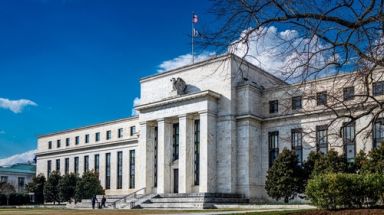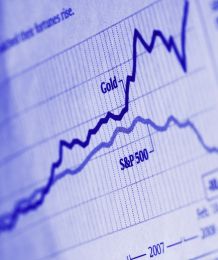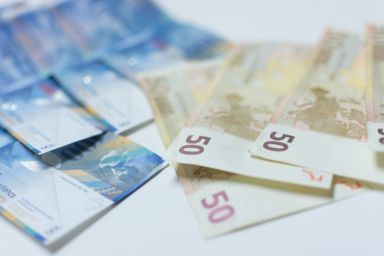Featured articles

Why Michael Burry just sold all his tech stocks
Michael Burry has just exited a nearly $100 million position on Nvidia that he opened earlier this year.
14:42, 9 October 2025

Gold forecast: Third-party price targets
Gold (XAU/USD) is currently trading at $3,982.94 (as of 6:12pm UTC, 7 October 2025), after briefly crossing $4,000 per ounce for the first time during the session.
14:43, 9 October 2025

How does Elon Musk impact cryptocurrency prices?
In cryptocurrency markets, few individuals command as much attention as Elon Musk. The CEO of Tesla and SpaceX’s tweets, Tesla and Dogecoin announcements, and public statements can trigger periods of heightened volatility, with shifts in buying and selling pressure across digital assets.
13:29, 30 September 2025

Xiaomi stock forecast: Third-party price targets
Xiaomi’s share price remains a focus for traders following the Hong Kong technology sector.
4 hours ago

BYD stock forecast: Third-party price target
BYD’s share price continues to draw attention as traders and analysts track shifts in the electric vehicle market and the company’s latest performance data.
5 hours ago

Spotify stock split: when could SPOT shares merit a stock split?
Spotify’s share price journey has been one of recovery and renewed attention. After a period of volatility and slower growth, the company has seen its valuation rebound, prompting questions about whether a stock split could be on the horizon.
11 hours ago

Discover Newsquawk: your integrated in-platform newsfeed
News moves fast — and so do the markets. With Newsquawk integrated into Capital.com, you can explore real-time headlines, detailed reports and tailored updates directly where you trade.
08:23, 5 December 2025

Market Mondays: Why a Hawkish Cut is still the Path of Least Regret
Markets tread with cautious heading into the Fed meeting this week, with focus on the revised projections into 2026.
13 hours ago

Discover Newsquawk: your integrated in-platform newsfeed
News moves fast — and so do the markets. With Newsquawk integrated into Capital.com, you can explore real-time headlines, detailed reports and tailored updates directly where you trade.
08:23, 5 December 2025

S&P 500-to-gold ratio: what it means and where it might go
The S&P 500-to-gold ratio provides a clear way to compare the performance of US equities with gold. By tracking how many ounces of gold are required to equal the value of the S&P 500 index, the ratio helps illustrate shifts in investor sentiment and the balance between risk and caution.
08:53, 2 December 2025

Market Mondays: December starts with anticipation as Fed expectations reign
Markets enter December with anticipation as the Federal Reserve meeting will be a key risk event, with changing expectations driving market volatility
14:14, 1 December 2025

Market Mondays: Why a Hawkish Cut is still the Path of Least Regret
Markets tread with cautious heading into the Fed meeting this week, with focus on the revised projections into 2026.
13 hours ago

Discover Newsquawk: your integrated in-platform newsfeed
News moves fast — and so do the markets. With Newsquawk integrated into Capital.com, you can explore real-time headlines, detailed reports and tailored updates directly where you trade.
08:23, 5 December 2025

Silver forecast: XAG/USD reaches new high, but positioning becomes overstretched
Buying appetite in silver has increased significantly this past week as several factors drive the momentum higher
09:39, 3 December 2025

Top 20 global oil stocks by market capitalisation in 2025
Oil remains a cornerstone of the global energy system, shaping economies, trade flows and industrial growth. Even as renewable alternatives expand and policy targets evolve, major producers continue to hold a central place in global supply chains and investment portfolios.
09:58, 2 December 2025

Market Mondays: Why a Hawkish Cut is still the Path of Least Regret
Markets tread with cautious heading into the Fed meeting this week, with focus on the revised projections into 2026.
13 hours ago

Discover Newsquawk: your integrated in-platform newsfeed
News moves fast — and so do the markets. With Newsquawk integrated into Capital.com, you can explore real-time headlines, detailed reports and tailored updates directly where you trade.
08:23, 5 December 2025

EUR/PLN forecast 2025: Third-party price targets
The euro–Polish zloty (EUR/PLN) pair draws on a broad mix of economic data, policy expectations and evolving market conditions, making it widely followed across the market.
15:09, 2 December 2025

Market Mondays: December starts with anticipation as Fed expectations reign
Markets enter December with anticipation as the Federal Reserve meeting will be a key risk event, with changing expectations driving market volatility
14:14, 1 December 2025

Bitcoin price prediction: Third-party outlook
Discover Bitcoin price projections 2025–2030 with third-party BTC forecasts, technical trends, price history, and CFD market sentiment.
7 hours ago

Discover Newsquawk: your integrated in-platform newsfeed
News moves fast — and so do the markets. With Newsquawk integrated into Capital.com, you can explore real-time headlines, detailed reports and tailored updates directly where you trade.
08:23, 5 December 2025

Top crypto traders to follow by social media popularity in 2025
Influencers, analysts and developers use digital platforms to exchange ideas, interpret market trends and discuss the development of digital assets. As their audiences grow, these voices increasingly shape how information spreads and how trading discussions evolve across communities.
15:11, 1 December 2025

Choosing a digital wallet: the top five crypto wallets for 2025 and beyond
Before choosing a crypto wallet, it helps to understand what they are and why they matter. Digital wallets aren’t just places to store cryptocurrency – they’re essential for keeping private keys safe and managing access to digital assets.
11:10, 28 November 2025
